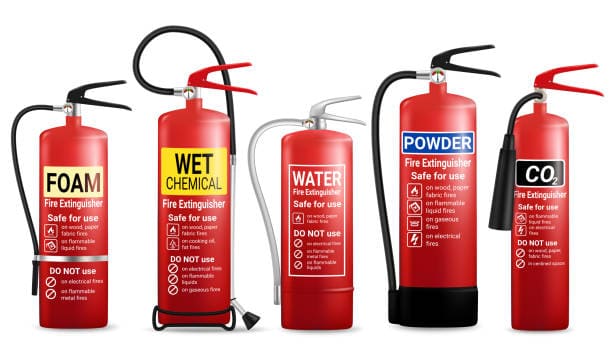Types of Portable Fire Extinguishers
Knowing how to use a portable extinguisher and using the right type is critically important.
Not only to putting out the fire, but also preventing personal injury and costly damage to equipment.
There are four basic types of portable fire extinguishers in use today. These are water, foam, dry chemical and carbon dioxide(CO2) extinguishers.
In addition, there are five classifications of fire which are based on the type of materials that burn. These classifications are A,B,C.D and K. Class A fires occur in ordinary combustible materials, including wood, paper, rubber some plastics and foam materials. Class B fires occur in flammable liquids, grease, tar, oil-based paint and other volatile liquids. These may include gasoline, kerosene, oil and combustible liquids including common solvents. Class C fires occur in energized electrical wiring or components of electrical systems. These types of fires may be in areas such as large electrical set rooms or electrical switch gear, too small electrical power tools. Class D fires involve combustible metals, such as sodium or lithium. The last class of fires is class k. These are kitchen fires involving cooking oil and fat.











